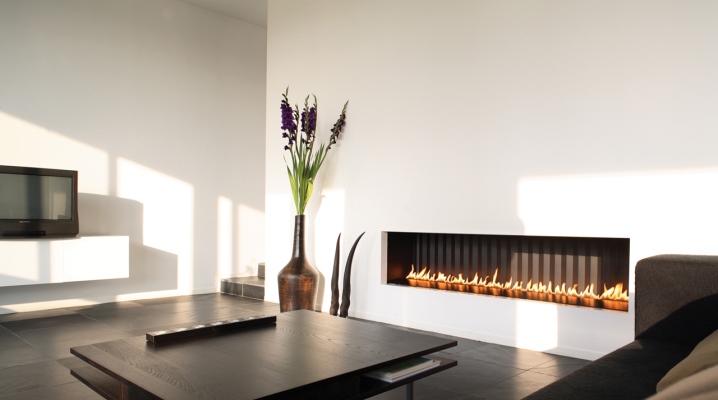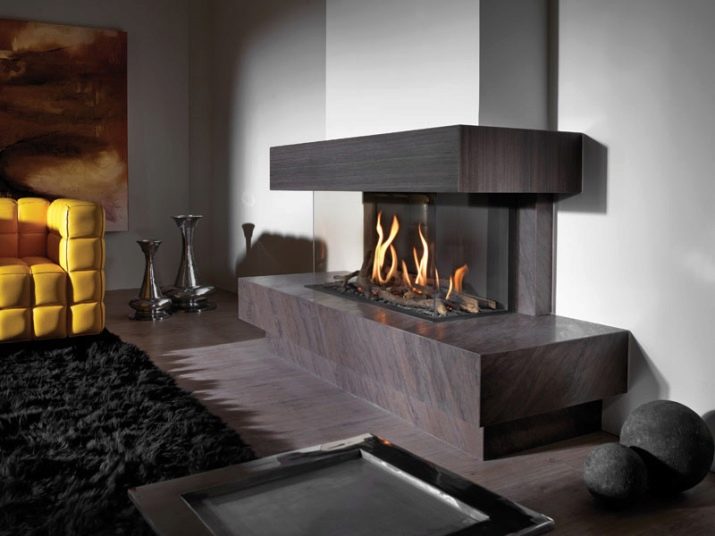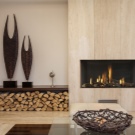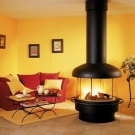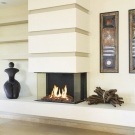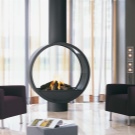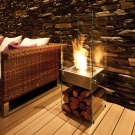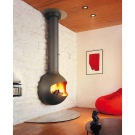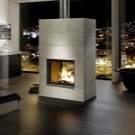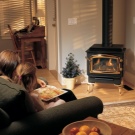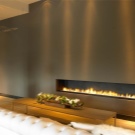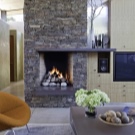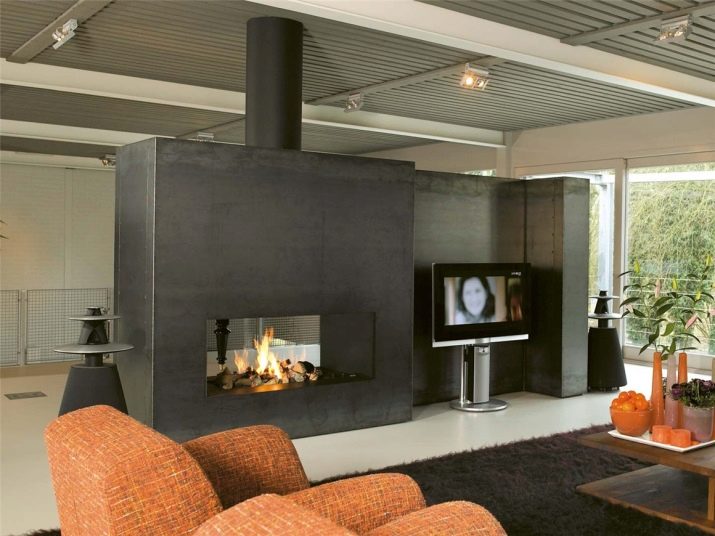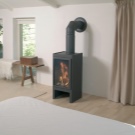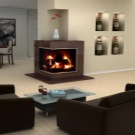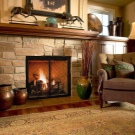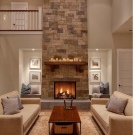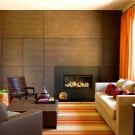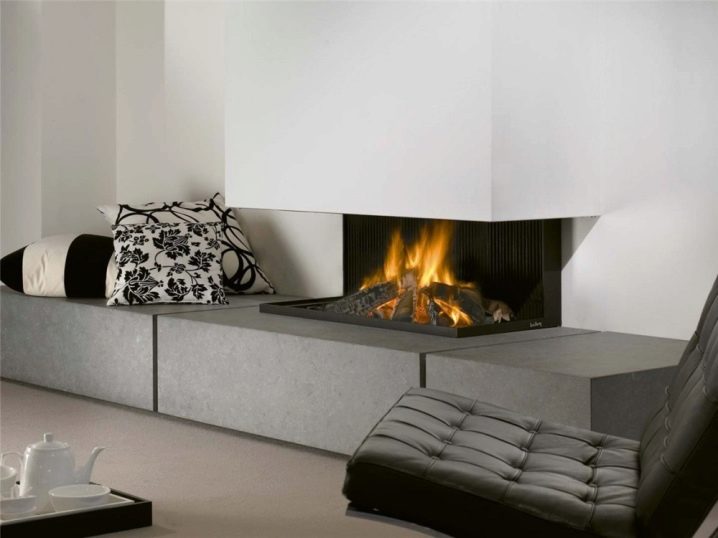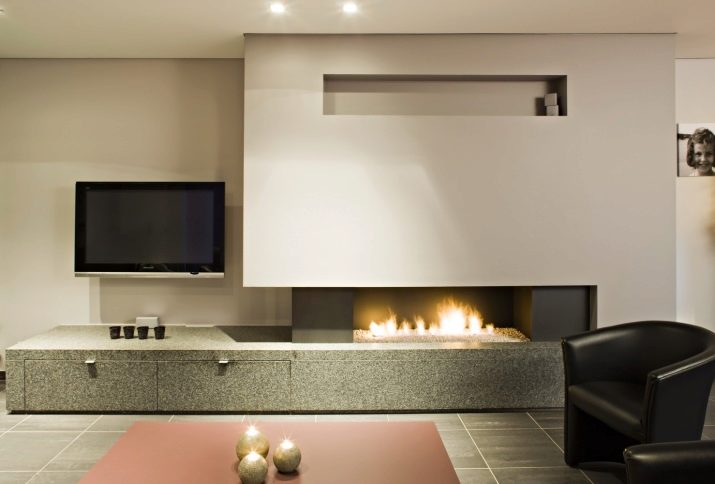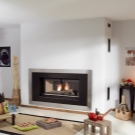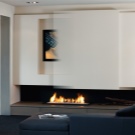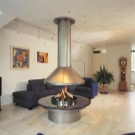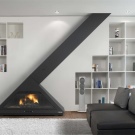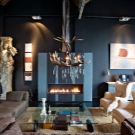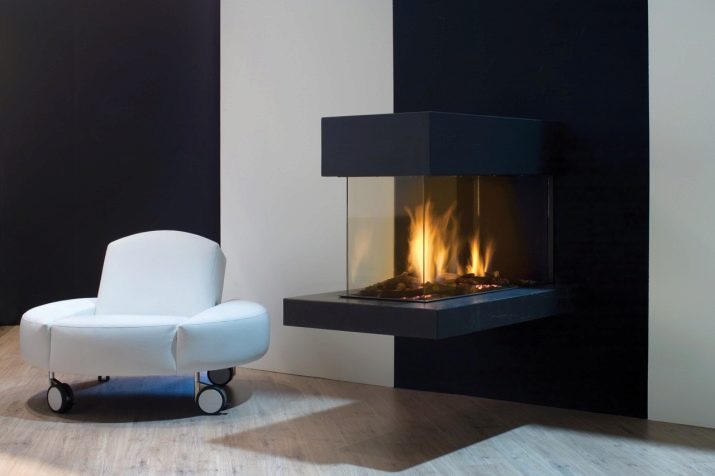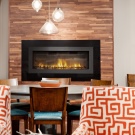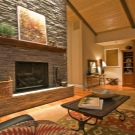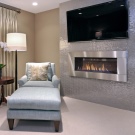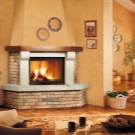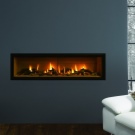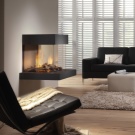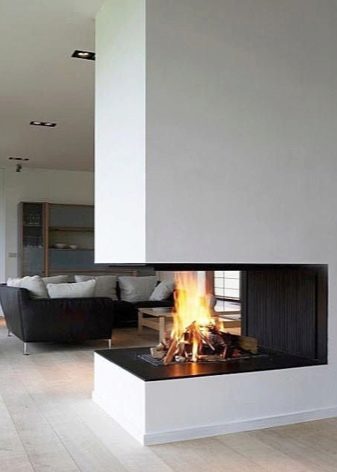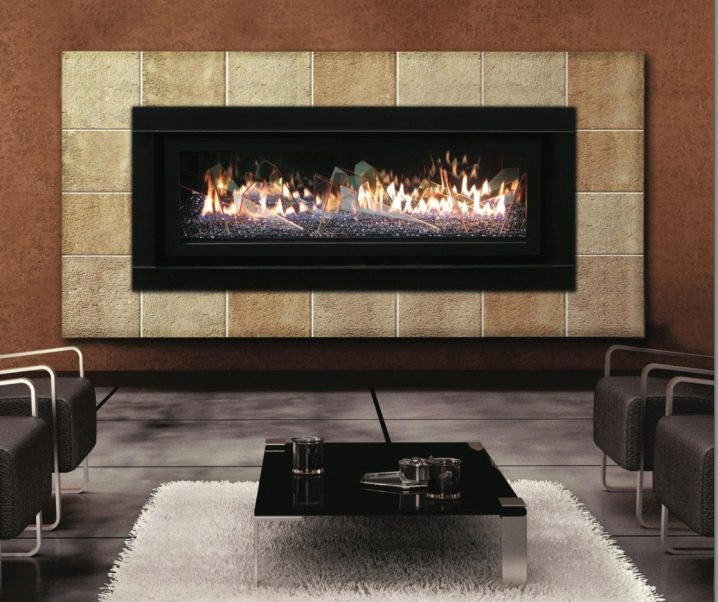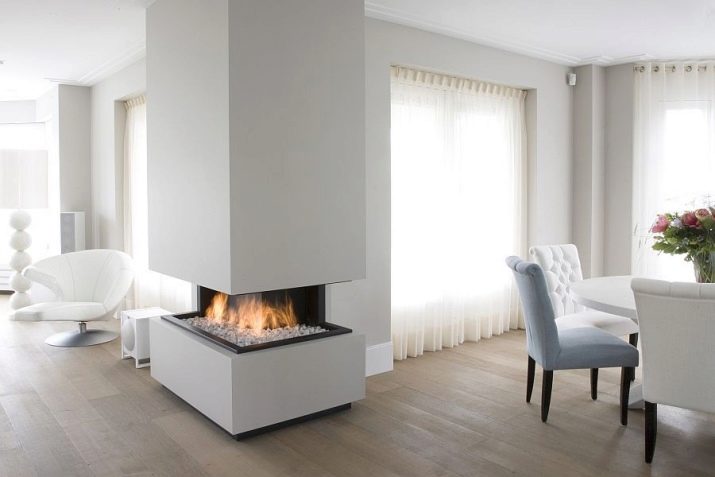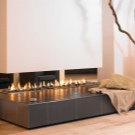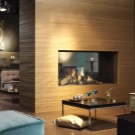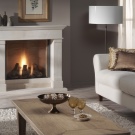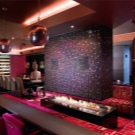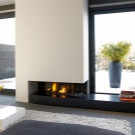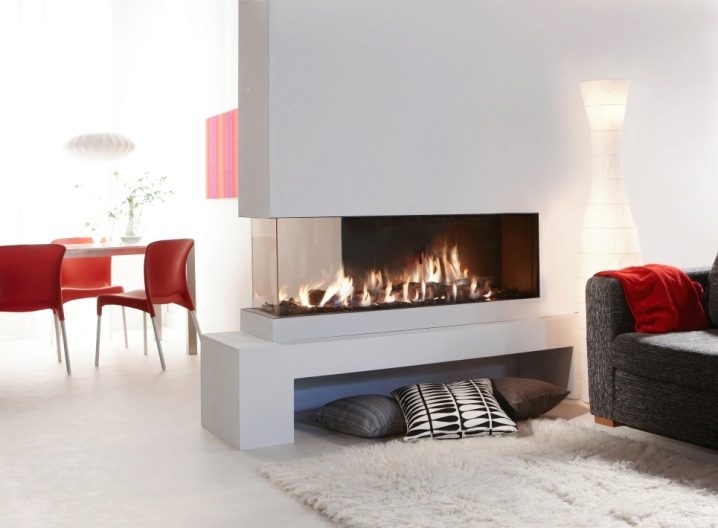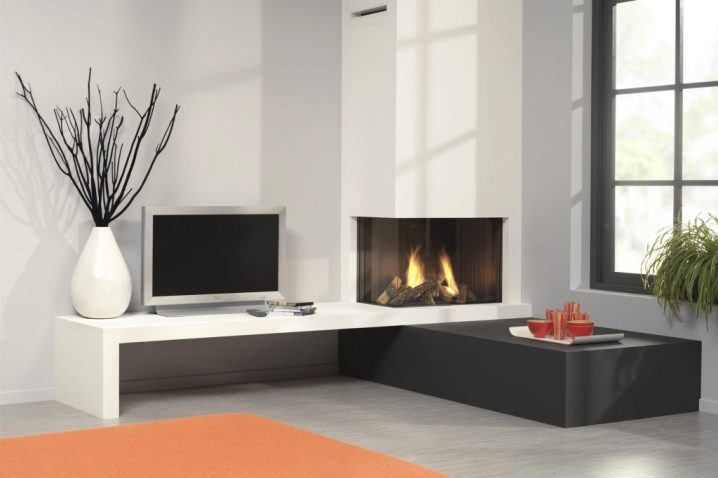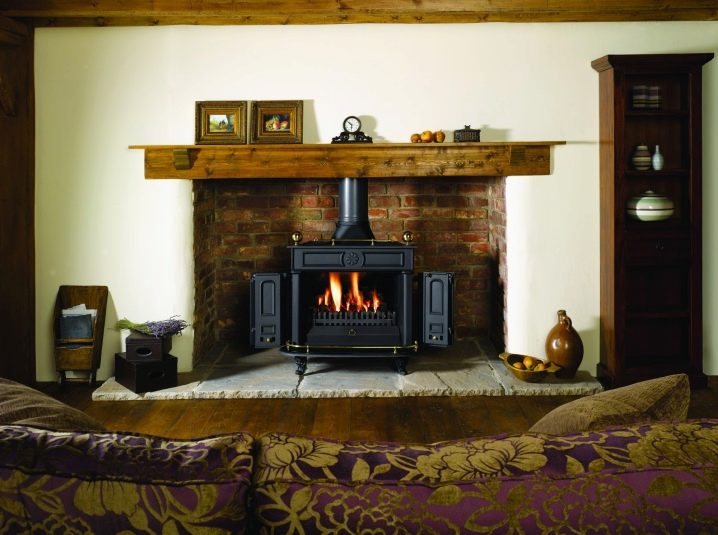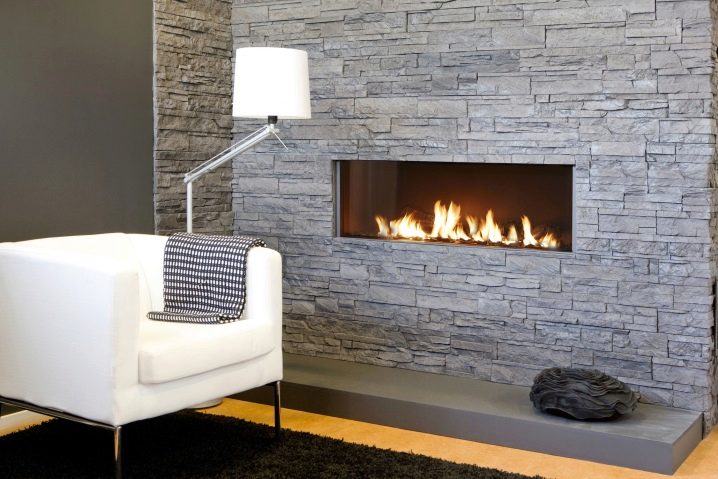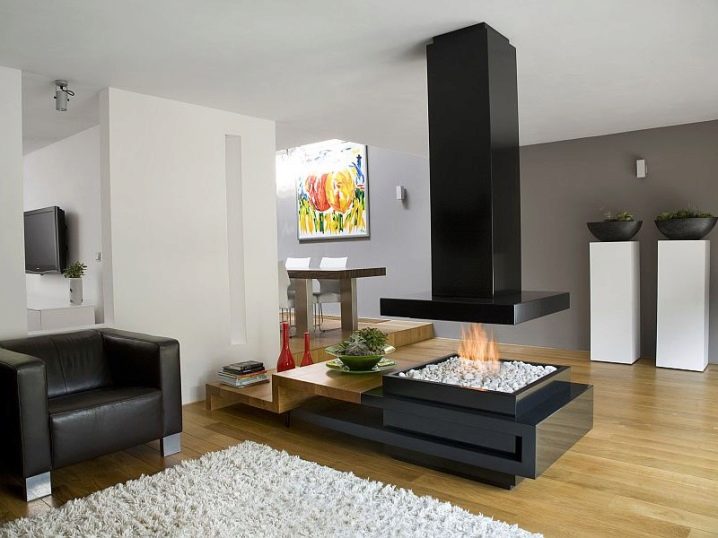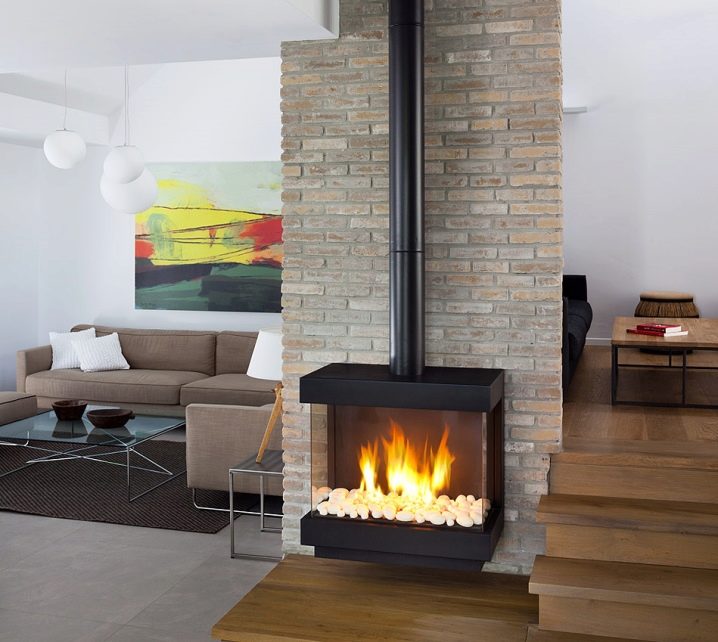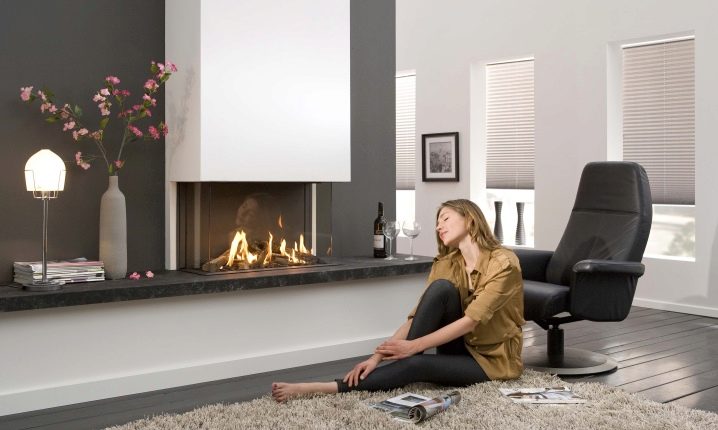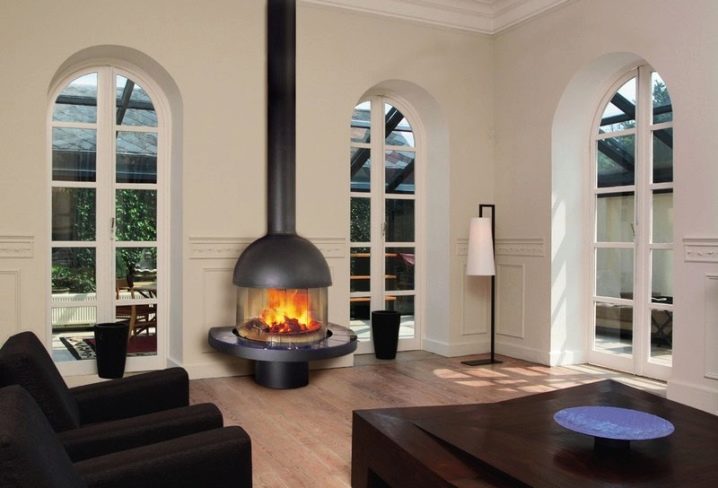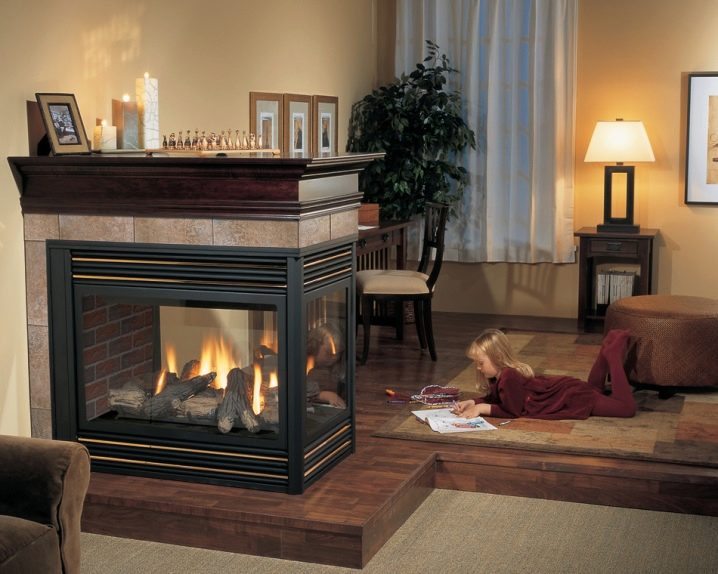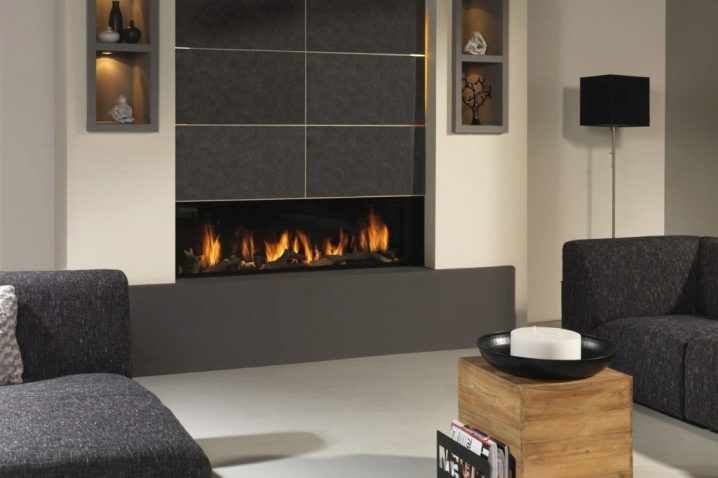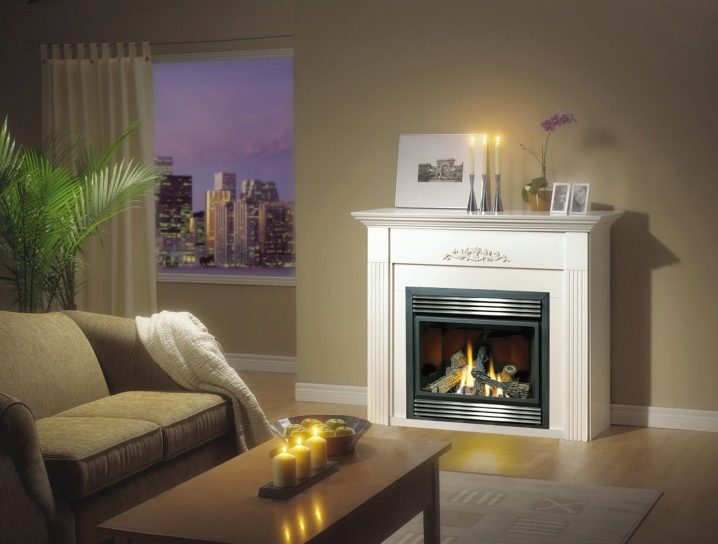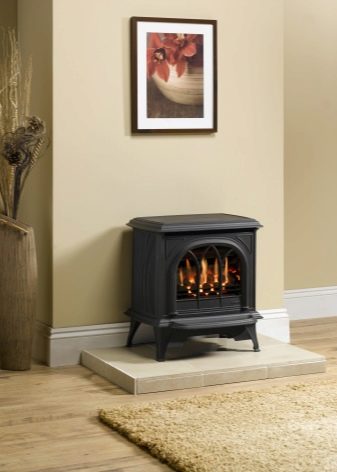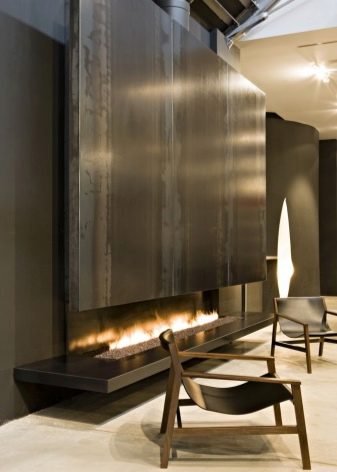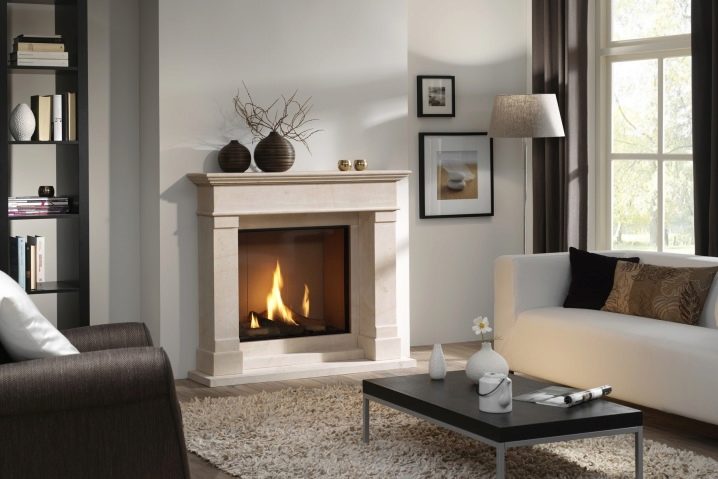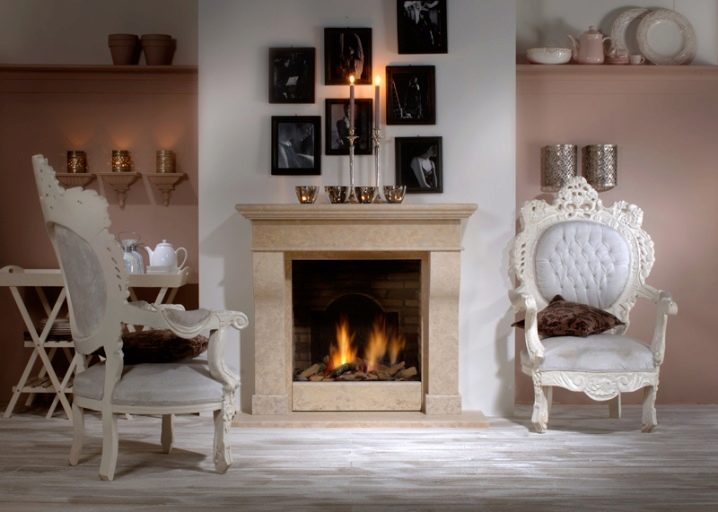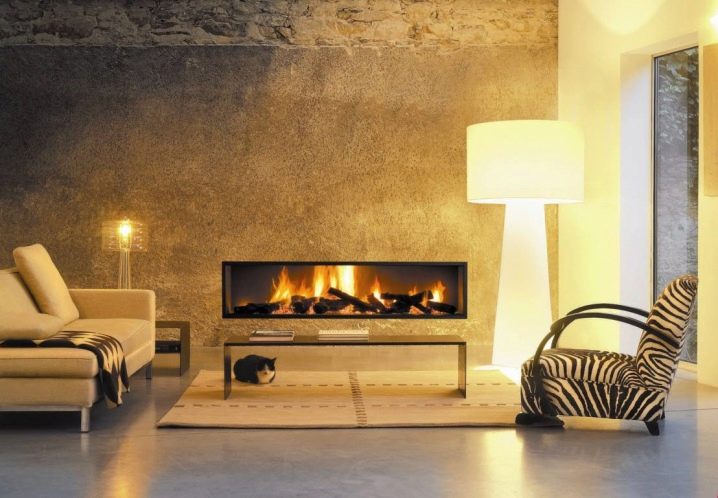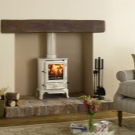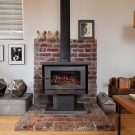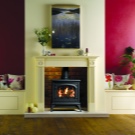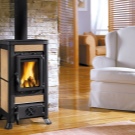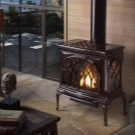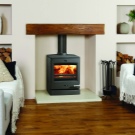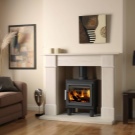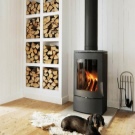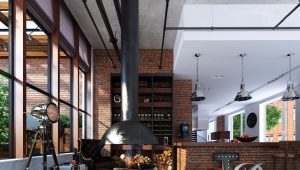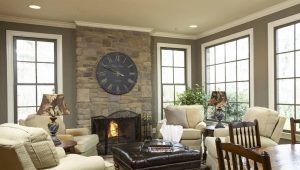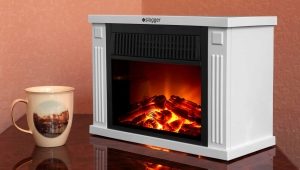Gas fireplace for home
For centuries, the only source of heat in the houses was a wood-burning fireplace. This type of heater is quite effective, because of what it continues to apply to this day. However, the operation of such fireplaces causes a lot of inconvenience: you need to constantly collect firewood, monitor the state of brick chimneys, periodically clean the chimney from the ash. All these inconveniences led to the emergence of new heaters, one of which is a gas fireplace for the house. Let's try to find out what features this heat source has.
Benefits
This type of heaters has a whole range of excellence. Among the main advantages are the following points:
- safety - the design of such devices is 100% hermetic, which excludes the probability of penetration of hazardous gas into a dwelling;
- the absence of soot and soot during combustion - this factor eliminates the need for constant cleaning of chimneys and internal surfaces of the fireplace itself;
- automatic operation - to start the heating it is not necessary to kindle the fire yourself, because the burning process begins after pressing a single button; in addition, a special control panel allows you to adjust the intensity of the heat generated;
- compactness - the installation itself takes up less space, and there is also no need to allocate space for storing firewood;
- universality - similar fireplaces are suitable for any houses: for a summer residence, for a country house and even for an apartment;
- different ways of “feeding” heaters - such fireplaces can function both from the main gas pipeline and from a cylinder;
- beautiful design - the devices are designed so that they can easily complement any type of interior.
Some cons
Of course, there is nothing perfect in our world. Gas fireplaces in this regard are no exception. Their main flaw is the price - such devices are expensive. Moreover, the installation of such devices is quite complicated, so the probability of self-installation is extremely small (for safety reasons, it is always better to use the services of professionals).
Another disadvantage of these products is the abundant consumption of fuel. Of course, when operating from a cylinder, the flow rate will be controlled, but if the device is connected to the gas main, you will have to pay a decent amount for utilities.
How are these heaters?
Gas fireplaces for private houses and apartments consist of 8 components.
- Firebox - the main element of such devices. Fireboxes can be open and closed. Variations of their shape and size can be very different.
- Smoke box and smoke outlet - part of the structure responsible for the release of carbon dioxide and other harmful fumes. Modern fireplaces are built without chimney made of bricks and cement. These parts are made of special metals and coatings. They have the appearance of pipes, due to which they take up less space.
- Heat exchanger - an element that guarantees good heat transfer.
- Gas burner is the main functional element of these devices. It provides gas from the pipeline or from a cylinder. As a rule, located at the bottom of the furnace.
- Reflector - plays the role of a gas distributor and fire.
- Decorative logs (not always present) - play the role of additional decoration.
- Heat resistant glass - mounted on closed models.
- Control unit - provides control over the operation of the heater.
Principle of operation
Such fireplaces operate on a simple principle. Using the remote control, the owner of the heater starts the gas supply. In parallel, the work triggered, providing a spark. After this begins the process of burning and heating a private house. The fireplace can heat the room up to a certain temperature set on the control panel, or work in the so-called decorative mode.
After reaching the required temperature mark, the heating power automatically decreases. When the temperature drops, the fireplace again begins to work at the level necessary for the established warming up of the room.
Turning off the device is extremely simple: by pressing a button or using a thermostat.
What to consider when choosing?
There are a number of recommendations that will help you choose the most appropriate type of gas fireplace. These recommendations relate to the type of fuel on which the heater is operating, the intended purpose of the installation, the output of thermal power. Let's talk about all these points in more detail.
Type of fuel used
The considered fireplaces can work from the main, as well as from bottled gas. Considering this moment is extremely important. The importance of the issue is due to the fact that some models can function only from the main fuel, and others - from the balloon. Giving such fireplaces a “foreign” power source is strongly discouraged. This could cause a breakdown of the device or, even worse, an explosion.
Models operating on the trunk gas are denoted by the letter “N”. Fireplaces that work from cylinders are marked with the letter “P”.
Target destination
The fireplace can be bought for two purposes: for heating the house or for decorating the interior. If the device will play the banal role of an element of decor, the power and type of power can be ignored. Here, the emphasis should be placed on the design and its compliance with the interior. If the heater will have to perform its primary function - to warm the house - then here you will need to take into account its power.
Heat output
This parameter is measured in kilowatts. The exact calculation takes place when taking into account the declared power of the device and the estimated heating area.As a rule, the manufacturer or the distributor indicate the area that a specific model of the fireplace is capable of heating. It should be borne in mind that manufacturers always indicate the capabilities of their creations, implying warming up of a well-insulated building. In other words, if the house is equipped with old windows, giving a draft, or poorly insulated walls, the fireplace will show far less efficiency.
To understand how much power you need a model is quite simple. 1 kilowatt of energy is spent on 10 squares of space. Multiply this figure by the area of your home, and you will get the required power for heating.
Existing plant types
By the nature of the installation, a gas fireplace can be:
- floor - mounted on a pre-prepared base, after which it is connected to the cylinder or highway (also, the chimney is equipped);
- wall-mounted on the wall with fasteners (most often brackets); similar models are ideal for families in which there are small children or excessively curious pets (cats, dogs);
- built in - such heaters require a preliminary arrangement of the portal and a full-fledged chimney;
- open - as a rule, these types are mounted in gazebos or in summer kitchens (often, the installation of the chimney is not required).
Among all these types of embedded models have the greatest realism and harmony. However, their installation requires special training, so to install it you always need to call qualified craftsmen.
Forms of fireboxes
For this indicator, there are the following models of fireplaces:
- front - mounted near the walls;
- angular - a place in a specific corner is assigned for their installation;
- island - mounted in the middle of the room, thus providing a full overview;
- bilateral through - embedded in partitions, thus providing an overview from both sides.
Owners of cottages and country houses can choose the form of fireboxes, relying only on personal preferences. Also, the choice of form will depend on the room in which the heater is to be installed. In the case of apartment residents, the approach should be more deliberate. As a rule, implementers recommend that such clients prefer frontal or angular versions. These models are perfect for apartments, becauseoccupy less space.
Body material
When burning, many chemical elements and compounds are released: carbon dioxide, sulfur. As a result, specific condensate forms inside the fire chambers. This condensate has a detrimental effect on ordinary metal, causing its rapid destruction. For this reason, other types of steel are used in the production of gas fireplaces.
In particular, cast iron is very popular. This type of steel contains an element called graphite. Due to the presence of graphite, the walls of the furnace can withstand the aggressive influence of the forming condensate.
Also, stainless steel is considered a good option for fireboxes. Even with abundant production of condensate such a fireplace will last for many years. And if you periodically purge the inner surface of the furnace, you can further extend the shelf life of the heater.
Automation device
According to the standard, the gas fireplace control unit includes the following components:
- electric ignition element - the presence of this component does not require the user to bring an open flame to the gas exit point, thereby ensuring proper fire safety;
- a system that controls the presence of fire - this system protects residents of the house from gas leakage, if the fire suddenly goes out;
- tipping control - stops gas supply if the firebox changes its original position (as a rule, floor and wall models are equipped with such a system);
- the monitoring system of the combustion mode - thanks to it, the temperature indicators of heating are set by the user.
Some models may include climate sensors. These sensors are installed in a heated room. They record the temperature of the room and synchronize the information with the automatic fireplace. Thus, the power of the heater is regulated.
What you need to consider when installing?
There are a number of rules, compliance with which will ensure long and safe operation of heaters. These rules look like this:
- the fireplace must be mounted on a stable surface;
- all burning elements of the interior should be as far as possible from the firebox;
- the connection of gas mains and the arrangement of the chimney should be carried out only by a specialist;
- for arranging the smoke exhaust system, ceramic or stainless steel materials should be used;
- there must be an air intake system that will ensure normal burning;
- the room in which the fireplace is installed should be well ventilated;
- it is necessary to build in a fireplace only in surfaces with high bearing capacity.
Top manufacturers
Customer reviews allowed us to identify the 4 best brands involved in the creation of such heaters.
- Cheminees Philippe - French manufacturer, whose fireplaces are famous for their reliability and high functionality.
- Gutbrod Keramik is a German manufacturer of gas fireplaces. For almost 150 years, this company has been launching high-quality heaters with high efficiency and pleasant design.
- Waco & Co is a Belgian manufacturer producing high-quality and affordable fireplaces.
- Element4 is a Dutch brand whose fireplaces have a simple but extremely elegant design.
Possible alternative
Fireplace stoves can be a good substitute for the considered heaters. They are more compact, easy to install and affordable. The only negative - a small heating area.
